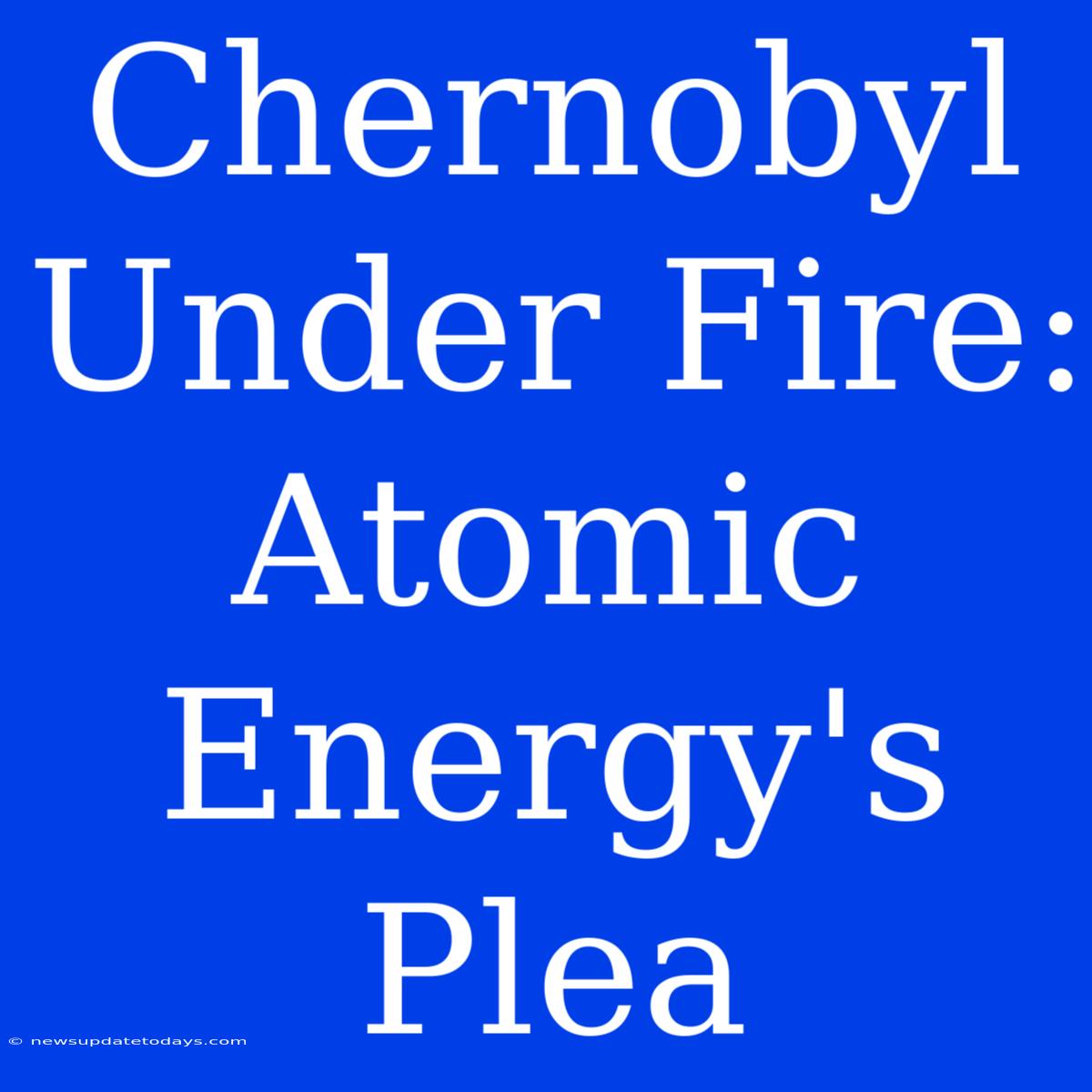Chernobyl Under Fire: Atomic Energy's Plea for a Safer Future
The Chernobyl disaster, a chilling reminder of atomic energy's potential for catastrophic failure, continues to resonate decades later. This article delves into the Chernobyl tragedy, exploring its lasting impact, examining the lessons learned, and advocating for a stronger commitment to nuclear safety worldwide. We will analyze the causes of the accident, the devastating consequences, and the ongoing efforts to mitigate the risks associated with nuclear power.
The Unfolding Catastrophe: A Review of the Chernobyl Accident
On April 26, 1986, Reactor Number 4 at the Chernobyl Nuclear Power Plant in Pripyat, Ukraine, suffered a catastrophic meltdown during a poorly conducted safety test. The resulting explosion released a massive plume of radioactive material into the atmosphere, contaminating a vast area across several countries. The immediate aftermath saw widespread panic, evacuations, and a desperate struggle to contain the disaster.
Key factors contributing to the Chernobyl accident included:
- Flawed Reactor Design: The RBMK-1000 reactor design lacked crucial safety features found in many Western reactors, making it inherently unstable.
- Inadequate Safety Procedures: The test conducted on the night of the accident violated established safety protocols, highlighting a systemic disregard for safety regulations.
- Lack of Transparency and Accountability: The Soviet government's initial cover-up and delayed response exacerbated the crisis, hindering effective emergency response efforts.
Devastating Consequences: The Human and Environmental Toll
The Chernobyl disaster resulted in immediate deaths, long-term health problems, and widespread environmental contamination. Thousands of people were evacuated from the exclusion zone surrounding the plant, and many continue to suffer from radiation-related illnesses, including cancer and other debilitating diseases. The environmental impact remains significant, with lingering radioactive contamination affecting the soil, water, and wildlife in the affected region.
Long-term consequences include:
- Increased Cancer Rates: Studies have linked Chernobyl to a significant increase in various types of cancer among those exposed to radiation.
- Genetic Mutations: Radiation exposure can cause genetic mutations, potentially leading to birth defects and other health issues in future generations.
- Environmental Degradation: The exclusion zone remains largely uninhabitable, with the ecosystem significantly altered by radiation.
A Plea for Safer Nuclear Energy: Learning from Chernobyl
The Chernobyl disaster should serve as a stark warning about the potential dangers of nuclear power. However, it should not be interpreted as an argument against nuclear energy altogether. Instead, it underscores the critical need for stringent safety measures, transparent regulation, and a commitment to continuous improvement in nuclear reactor design and operation.
Key aspects for a safer future of nuclear energy:
- Improved Reactor Designs: Modern reactor designs incorporate multiple safety systems to prevent accidents.
- Robust Safety Regulations: Stringent international safety standards and rigorous oversight are essential.
- Transparency and Accountability: Open communication and accountability are crucial to ensure public trust and facilitate effective emergency response.
- Investing in Research and Development: Continuous investment in research and development is crucial to enhance nuclear safety and efficiency.
Conclusion: Remembering Chernobyl, Building a Safer Tomorrow
Chernobyl serves as a poignant reminder of the potential dangers associated with nuclear power. While the accident was a catastrophic event, the lessons learned can and should be used to build a safer future for nuclear energy. By prioritizing safety, transparency, and continuous improvement, we can harness the benefits of atomic energy while mitigating the risks. Remembering Chernobyl is not simply about acknowledging past failures but about actively working towards a future where such tragedies are prevented.

